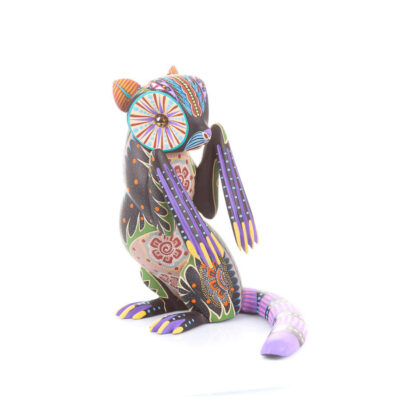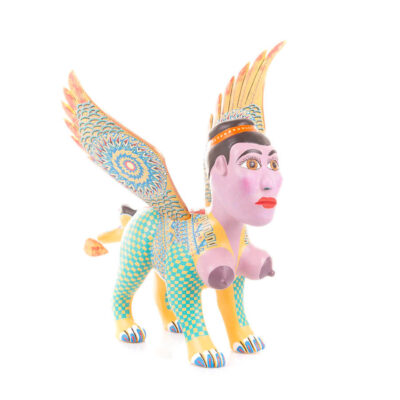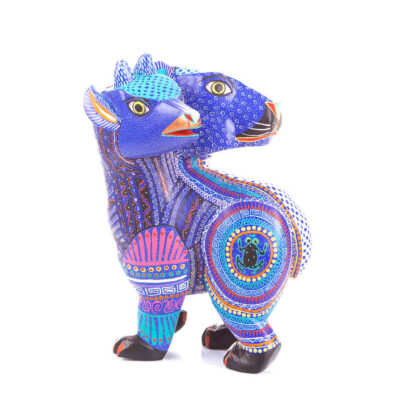Alebrijes
History of alebrijes
One of the greatest exponents of Mexican craftsmanship is the alebrije. Popularised worldwide thanks to the Oscar-winning film Coco, these figures of formidable shapes and colours originated in the middle of the 20th century. The cartonero Pedro Linares López, in lucid dreams induced by an illness, glimpsed a world inhabited by fantastic beings. These dreams were recurrent and from that moment on Pedro Linares began to build painted cardboard figures with the beings that appeared to him. These works were a huge success and were even exhibited in the United States and Europe.
It was at the end of the century when this tradition was introduced in Oaxaca. The Oaxacan artisans were expert carvers of copal wood and adapted the original shapes and colours of the alebrijes to their art with wood. In this way the alebrijes reach their maximum artistic expression by uniting the fine Oaxacan wood carvings and the originality of the beings dreamed up by Pedro Linares.
The making of the Oaxacan alebrijes
The production of alebrijes in the villages around Oaxaca has two distinct parts. The first is the selection and carving of the alebrijes. The alebrijes of Oaxaca are carved from copal wood. Copal is a tree that has a great tradition in Mesoamerica for the extraction of its aromatic resin. When freshly cut, copal wood is very soft and easy to work with.
The artisan carver, once he has chosen the copal trunk to carve, and before starting his work, he feels which is the alebrije that rests inside the wood. In this way, the artisan carves the wood following his intuition and supported by the inspiration that the copal gives him. The wood is so soft that originally only normal machetes and knives were used to make it. Once the carving work is finished, the figure is polished, using only fine sand to achieve a very fine polish.
Once the carving is finished and the naked figure has dried, the second step in the production of the alebrije begins. In this step the artisan painter fills the surface of the alebrije with colours and impossible geometrical shapes. The more elaborate and complex the painting, the better the alebrije is. One can find true works of art such as the ones we have had the opportunity to acquire.
Normally, as with most handicrafts, the handicraft work is carried out by a family group. It is common for the man to collect and carve the copal into its final shape. It is the woman, on the other hand, who does the fine work of painting.
As you would expect, each alebrije is unique and unrepeatable, from its conception in the soul of the wood to its finishing with its intricate painting. In our shop you will find the selection of alebrijes we acquired, selecting the best we could find from each artisan.







